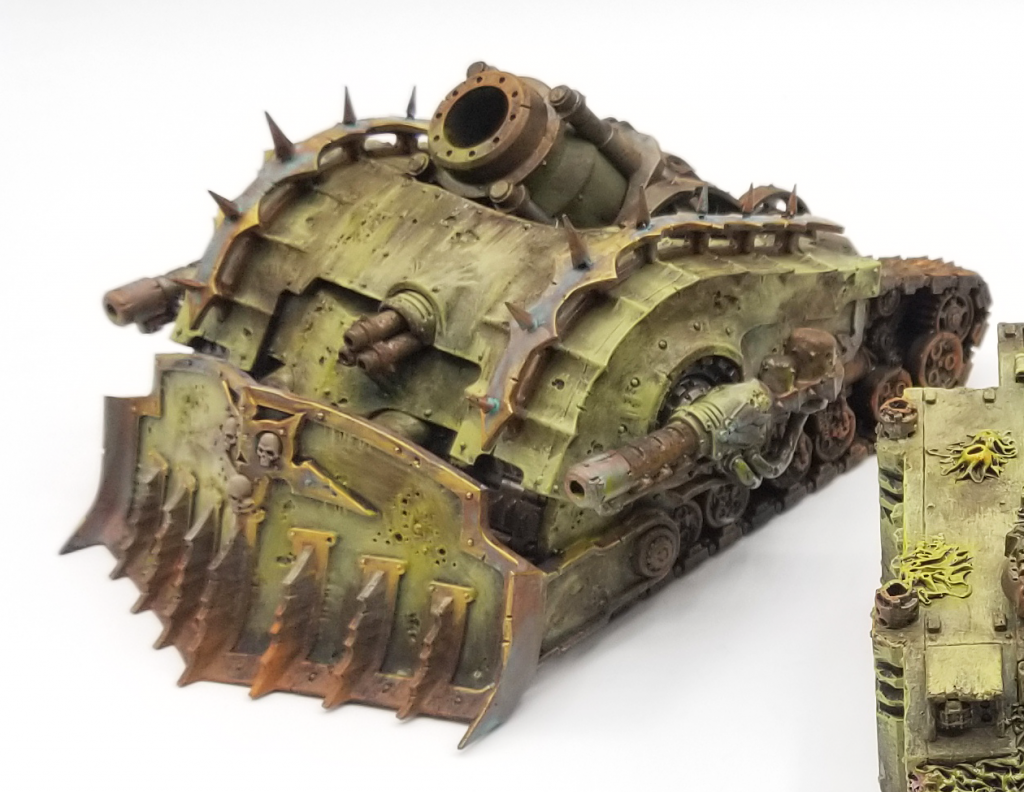In our How to Paint Everything series we look at how to paint well, everything, with different methods and approaches from different artists. Today we’re looking at how to paint weathered bronze and copper.
Around 8000 BCE humans began using copper mined from the earth. It was an excellent raw material for making weapons, tools, and jewelry due to its malleability and also that it was ready to use in its raw, unprocessed form. Thousands of years later it was discovered that combining copper and tin would create a much harder, durable metal alloy known as bronze.
When exposed to water and oxygen copper and bronze will oxidase, much like iron. However instead of the familiar reddish-browns and oranges of rusted iron, copper and bronze form a bluish green oxidation known as ‘patina’ or ‘verdigris’.
Skails’ Method
My method is a slightly abbreviated (and using paints I have on hand!) version of Darren Latham’s he used in the Lord of Blights Masterclass video. In step three I use a burnt umber ink mix, which is Daler-Rowney Burnt Umber ink mixed 1:1 with matte medium and a drop of flow improver. Contrast Wyldwood would work well for the same step.
Step one: Scale 75 Victorian Brass on all the metal.
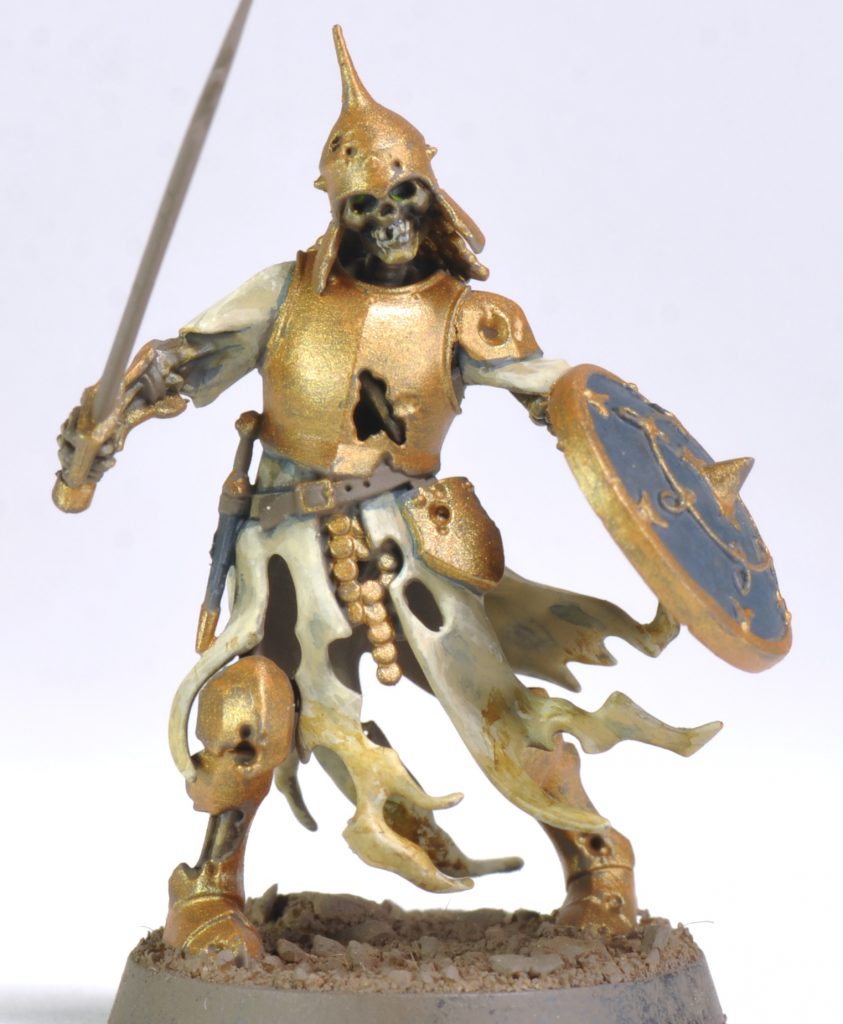
Step two: Citadel Nuln Oil across all the metal surface. I put this on thickly, only pulling off heavy pooling on flat areas.
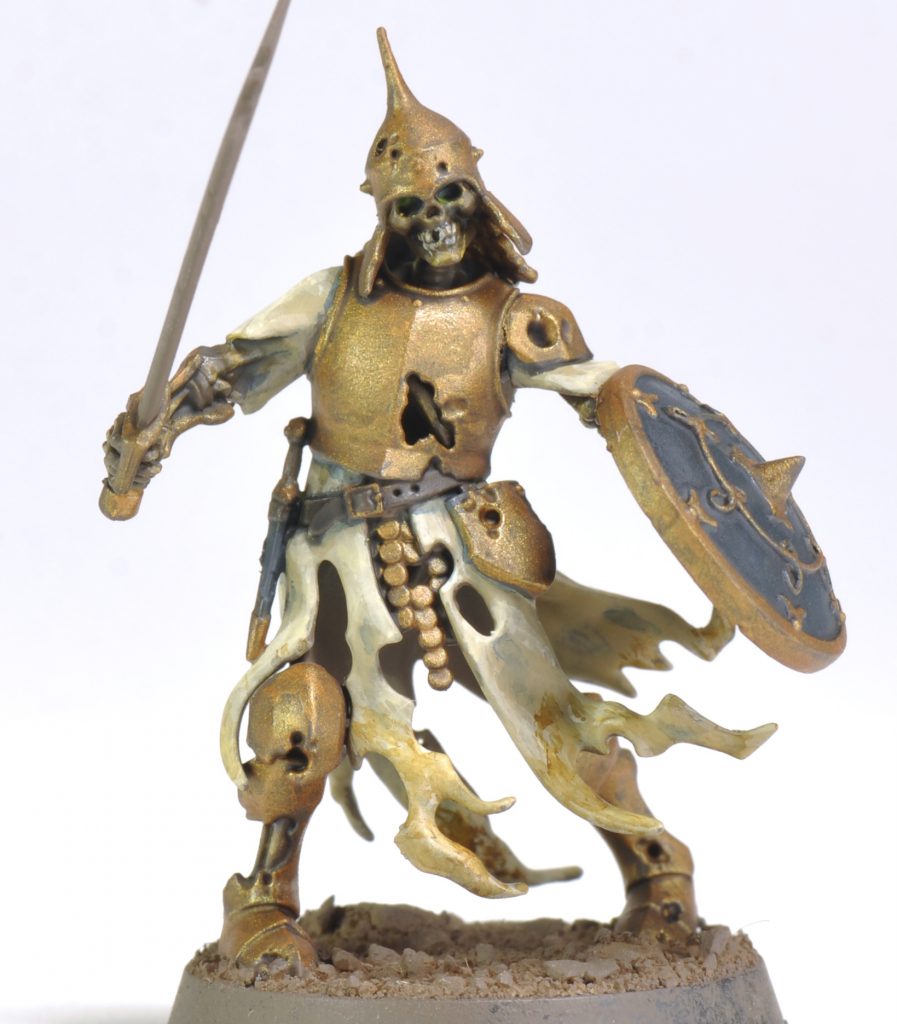
Step three: Burnt Umber ink mix randomly on surface.
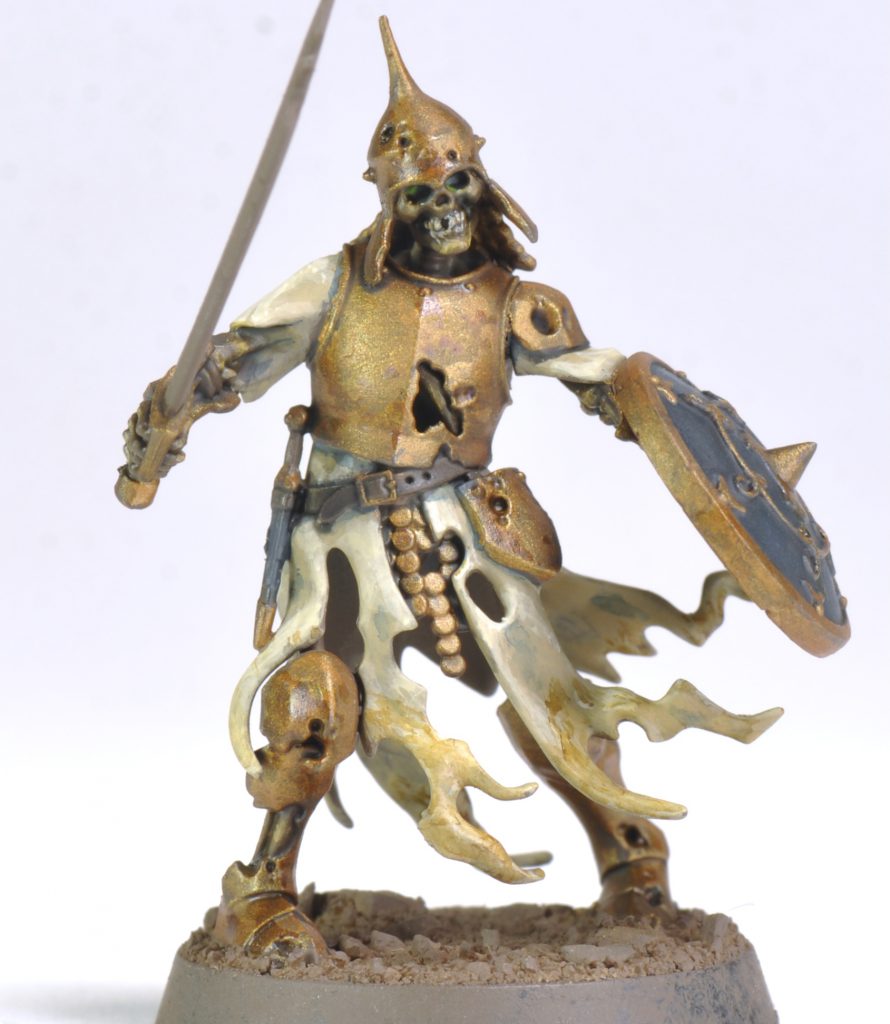
Step four: Citadel Incubi Darkness random splotches, where oxidation will be.
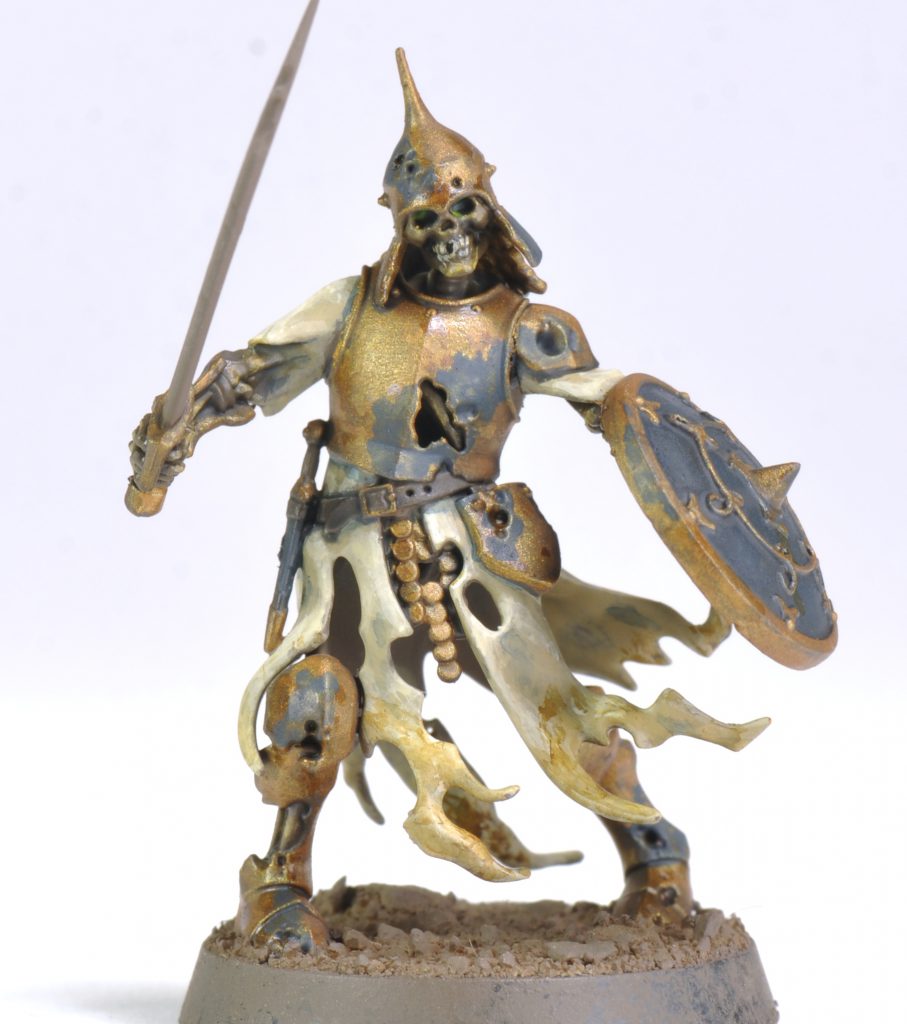
Step five: Citadel Kabalite Green mixed 2:1 with Vallejo Game Color Glacier Blue. Dabbed into the middle of the Incubi Darkness layer.
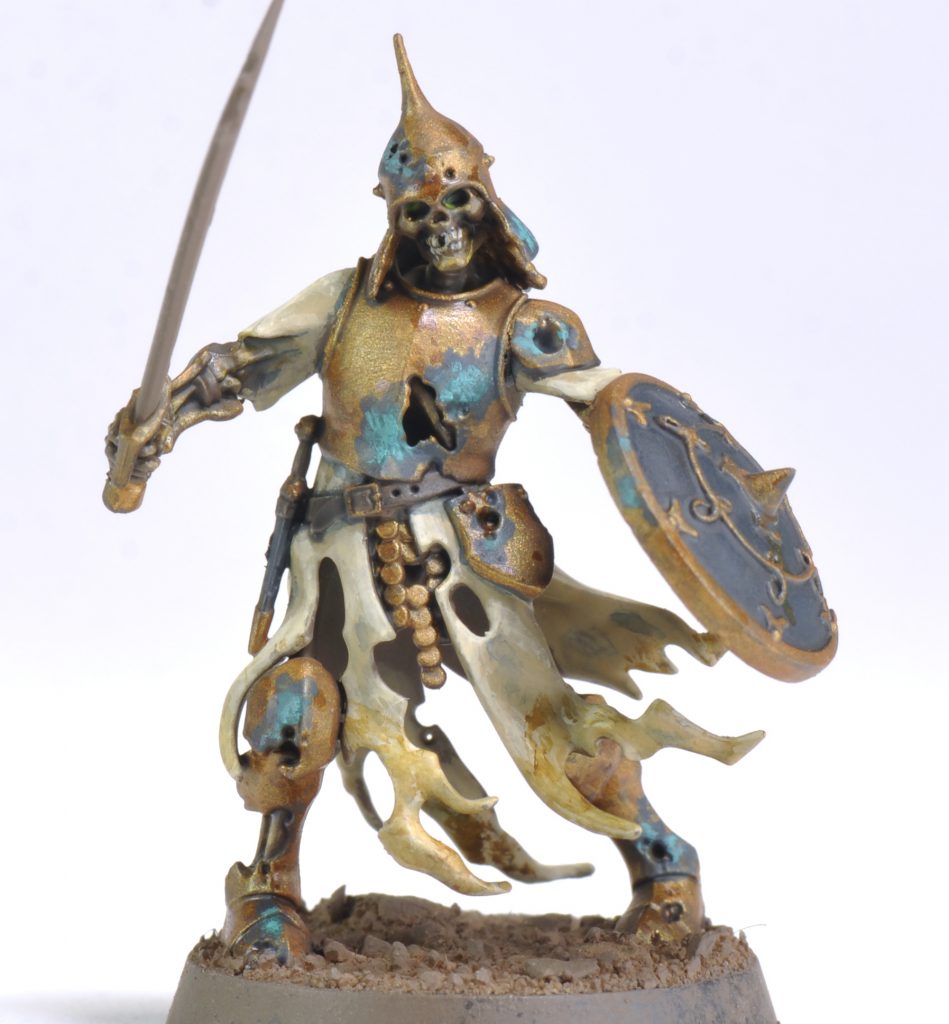
Step six: Citadel Nihilakh Oxide splotches onto patches of Kabalite mix.

Step seven: Scale 75 Pure Copper as a highlight on armor. Mostly on upward facing angles and sharp edges.
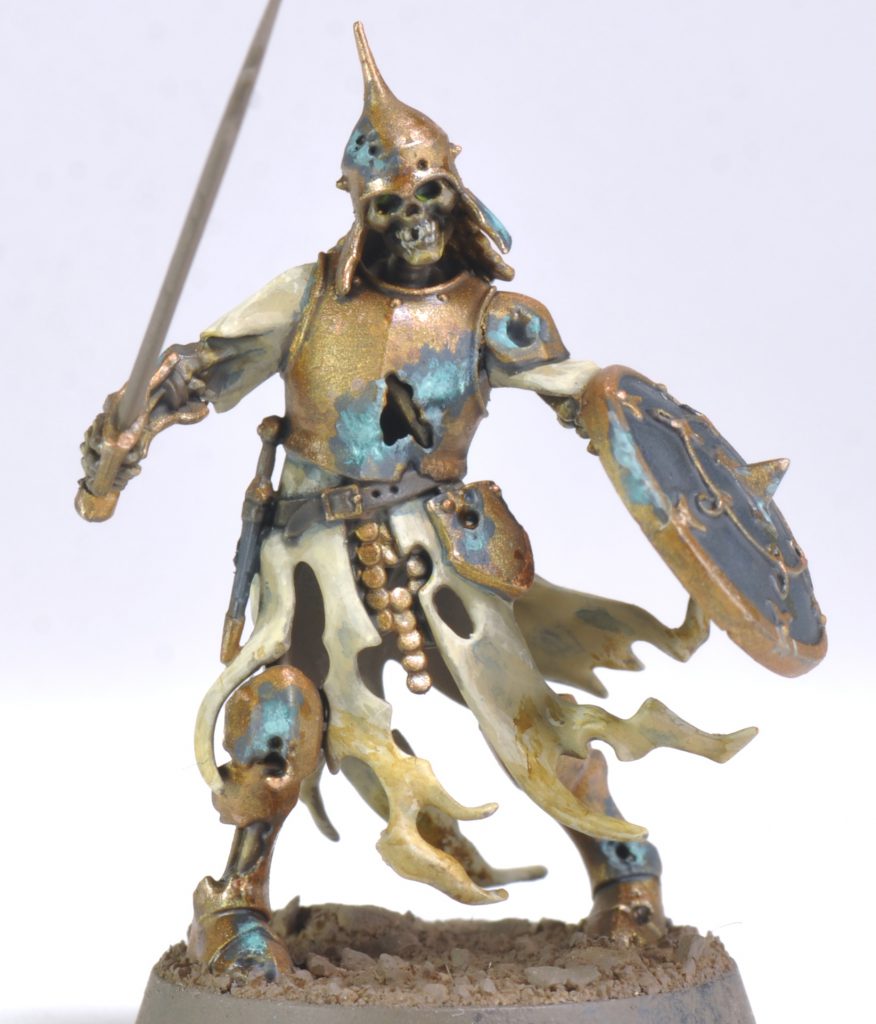
Step eight: Citadel Runefang Steel as a spot highlight over the highest points of the previous Pure Copper layer.
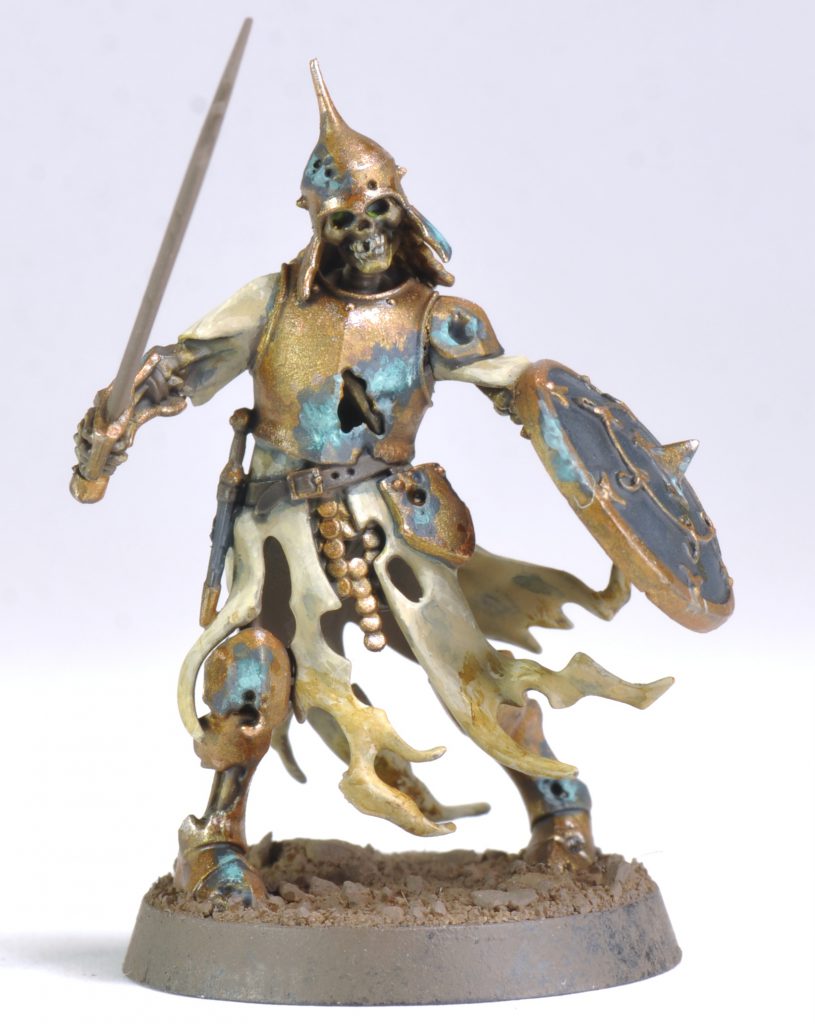
Primaris Kevin – Dirty Down Verdigris Effect
Dirty Down sells a series of paints that can produce three effects; rust, verdigris, and moss. I have experimented with all three of them and have come to the following conclusions:
- They’re amazing.
- They’re incredibly toxic and a pain in the ass to work with.
- They’re worth the effort.

There’s not much to this product. You apply the verdigris effect where you want it, and when it dries it becomes this intensely vibrant oxidized copper effect. In some cases this might actually be a bit too vibrant, so you can muddle the effect by applying a coating of sepia acrylic wash as shown above. The paint is a combination of some really nasty solvents, so you will want to be quick because otherwise the pot and brush will start to dry out. It’s also a good idea to use some ventilation and if you have a habit of licking your brushes then take special care not to do so. While the bottle says “water soluble paint” this statement is optimistic at best; I’ve had much more success using 100% isopropyl alcohol to clean my brushes. A small plastic cup (I use yogurt containers) with some IPA in it is a good wash cup, and you will be washing your brushes frequently to avoid clumping. You don’t have to wipe your brush down after you’ve dunked it in IPA, as that’s one of the solvents in the bottle.
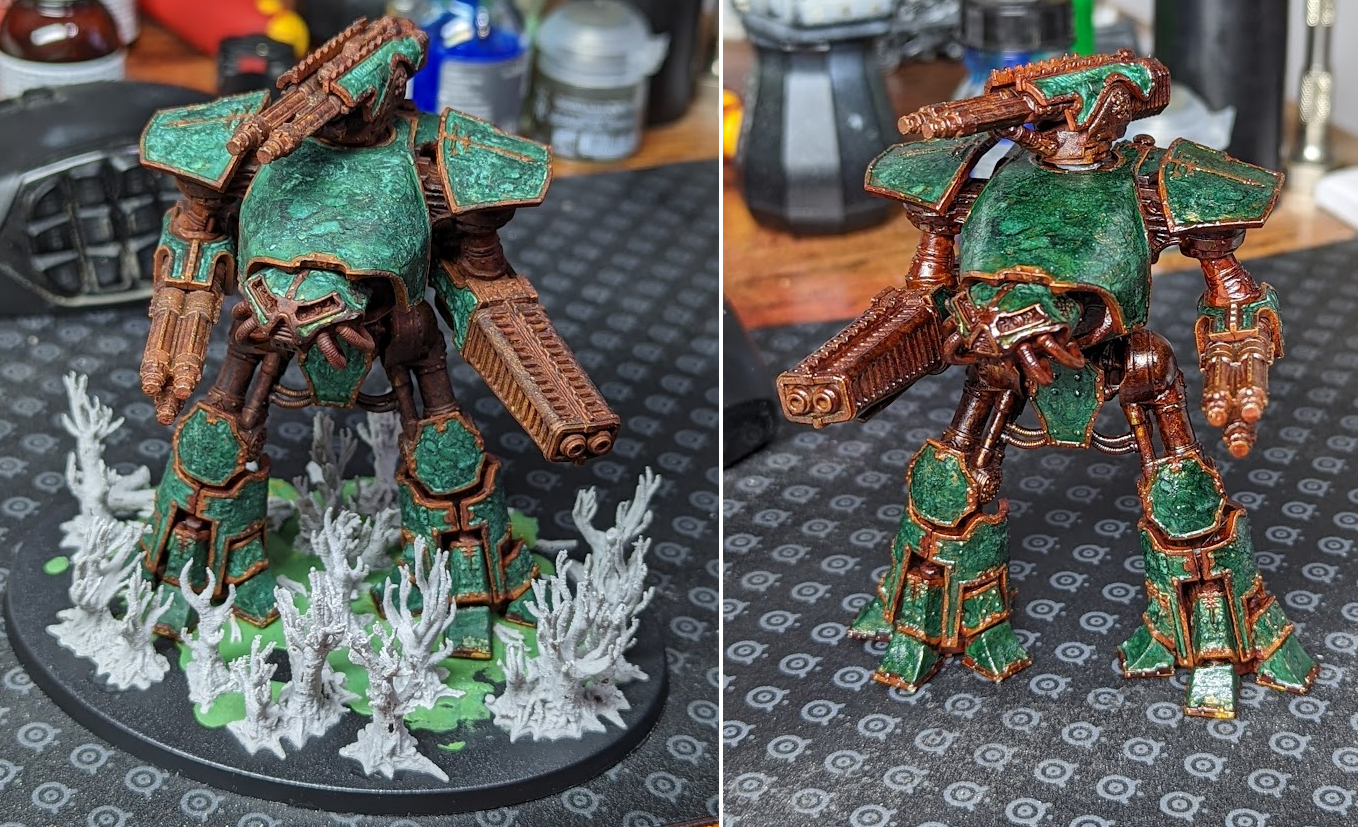
The other thing to know is that this product is not a normal paint. It can be very thick and will obscure detail (the same is true of the rust effect, as seen above), and more importantly the effect is completely obliterated after you apply a gloss varnish. Fortunately the paint itself is pretty resilient and I wouldn’t expect much of an issue in terms of wear. In short Dirty Down Verdigris Effect is fantastic and I highly recommend it, but it works best when you understand and accommodate its limitations.
SRM’s Method
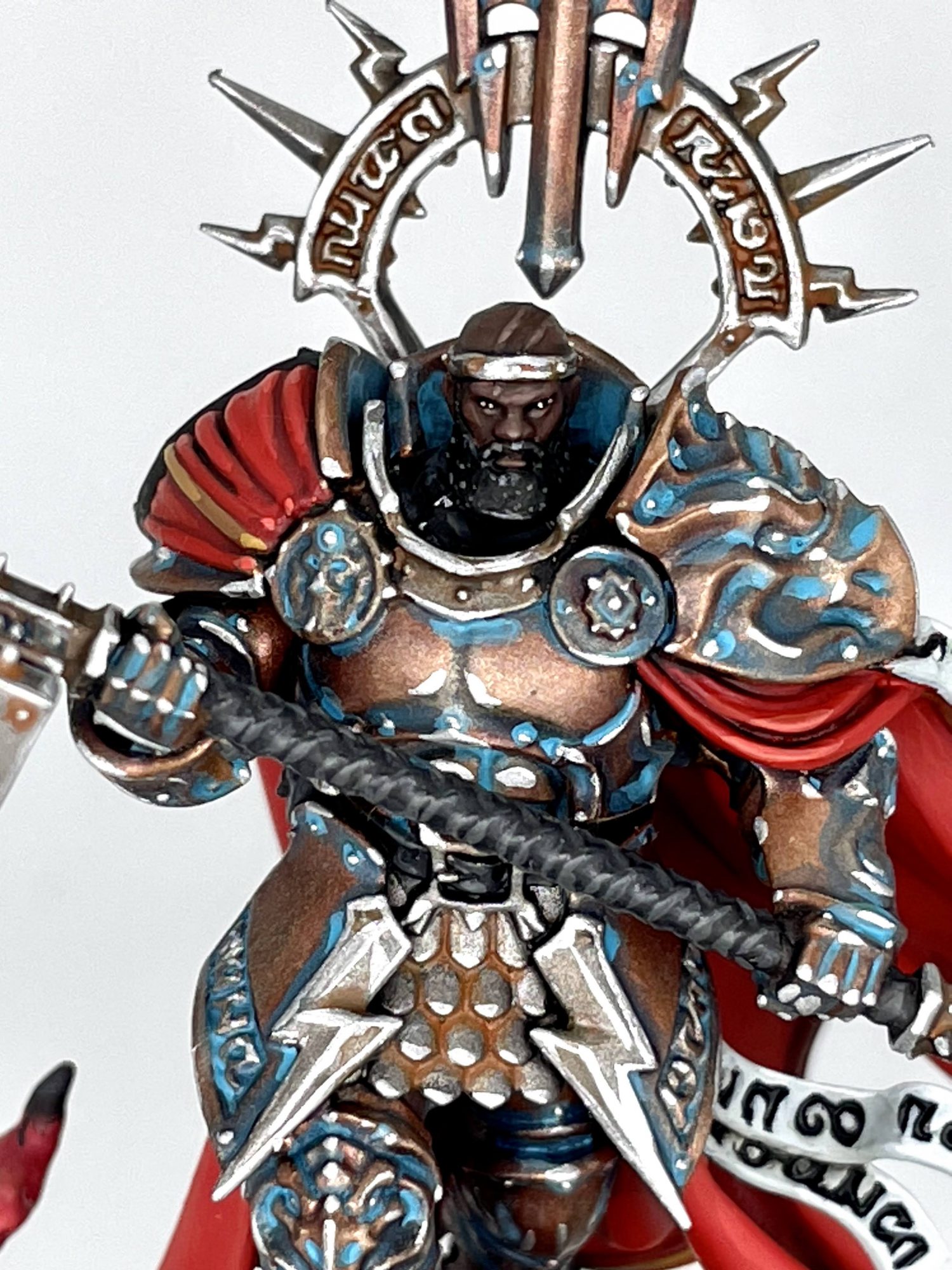
I’m lifting this largely from my own HTPE article on my “Greekcast” Stormcast army, so if you want to read more about how I did the capes and so on you can check it out here. I’ll drop the pertinent bits here though:
Weathered Bronze Armor:
- Base Balthasar Gold (2 thin coats, this stuff clumps)
- All over wash 1:1:1 mix of Lahmian Medium Nuln Oil, Agrax Earthshade
- All over wash 2:2:1 mix of Lahmian Medium, Druchii Violet, water
- Black Templar Contrast in the eyes
- Extremely thinned Sotek Green around rivets and deeper recesses
- Extremely thinned Temple Guard Blue around rivets and deepest recesses
- Drybrush Sycorax Bronze all over
- Highlight Stormhost Silver on the most raised edges and rivets

The two washes shade the metals and provide some natural color variation, and you could just use really thinned Druchii Violet instead of mixing something bespoke. You’ll definitely use that Nuln/Agrax/Lahmian mix more later though. You might notice there’s a lot of thinned layer paints in there. I’ve taken to keeping the mixed washes premixed in empty paint pots, while I thin the other paints on my wet palette. I didn’t like the results I got from Nihilakh Oxide, so started with thinned Sotek Green instead. The thinned Temple Guard Blue gives the weathering a bit more depth and natural variation which makes it look more realistic. Black Templar could easily be subbed out for a thinned black paint, I just wanted it to be a little more subtle. That drybrush of Sycorax Bronze unifies the armor color again and also smooths over any messiness from the verdigris steps. Picking out just the sharpest edges with Stormhost Silver will define a lot of the edges of the model, and keep it from getting too muddy.
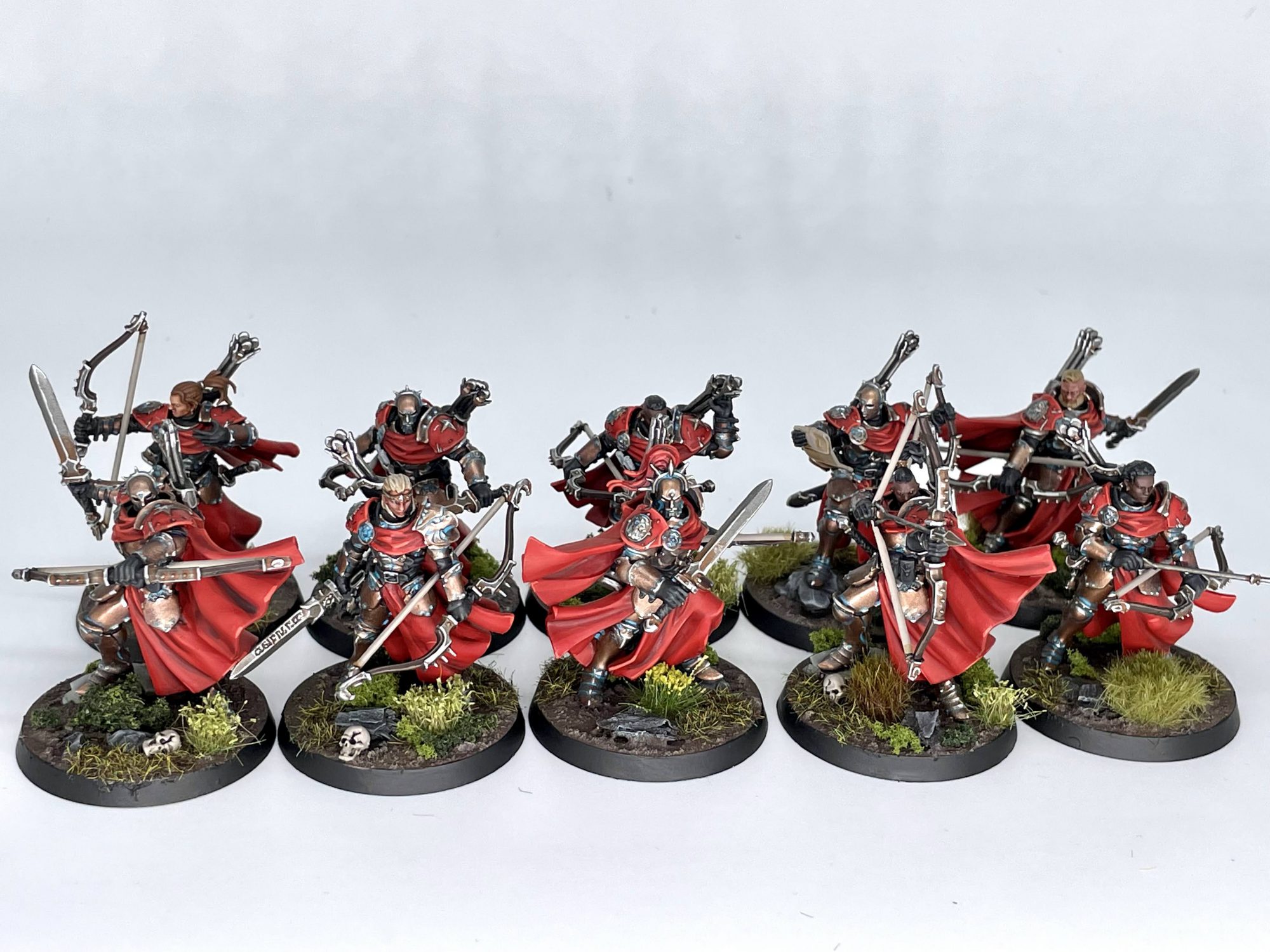
Charlie: quick copper/bronze on terrain
A quick image search confirms what most of us already know: copper roofs tend to end up a pretty consistent and pale light green. Since terrain is something one generally wants to grunt out at speed, I keep things simple when it comes to big copper areas on buildings.
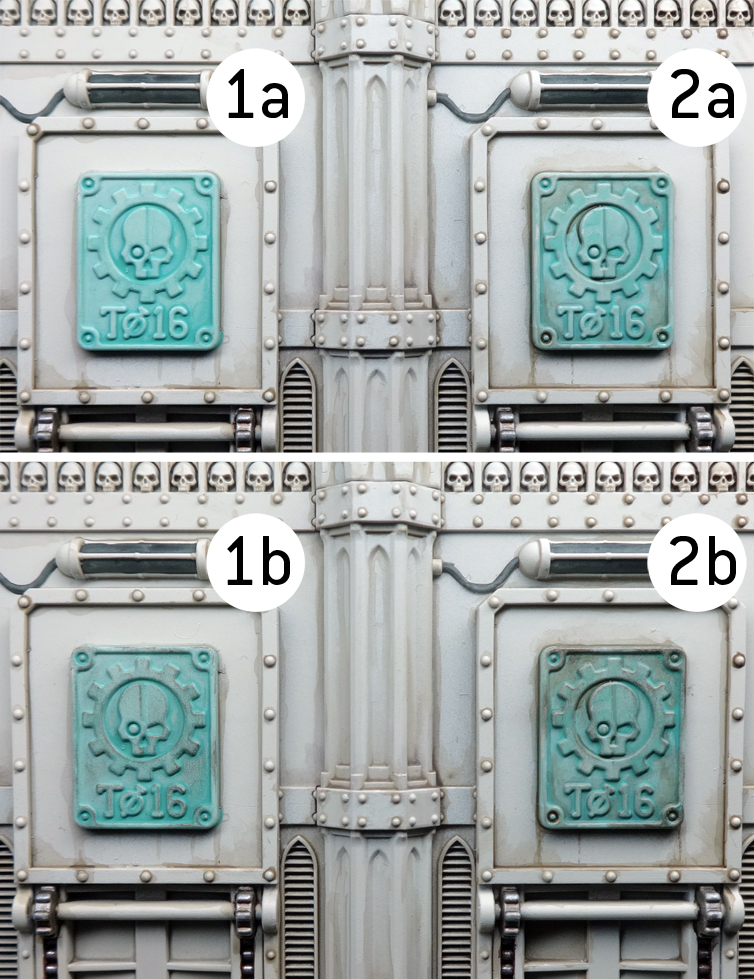
On the left (1a & 1b) I’ve sprayed the area Citadel Wraithbone, then given it a single generous coat of Nihilakh Oxide (or, if you’re Sean Connery: Nihilakh Ork Shite). Once that’s dry – and that’ll take a while – I drybrushed it with Citadel Warplock Bronze. Done.
The method on the right (2a and 2b) is the same thing, but with a semi-random recess shade with Agrax Earthshade to make it look dirtier.
TheChirurgeon’s Fast Method for Death Guard
There’s not a ton to this; it’s just a quick method I developed to get these guys on the table, but it works well. I start by painting Balthasar Gold, then I wash that with Agrax Earthshade. Once that’s dry, I hit the recessed areas – and especially the rivets – with Nihilakh Oxide. That’s usually enough, but I’ll also typically come back and hit the edges with Retributor Armour if I want something real fancy.
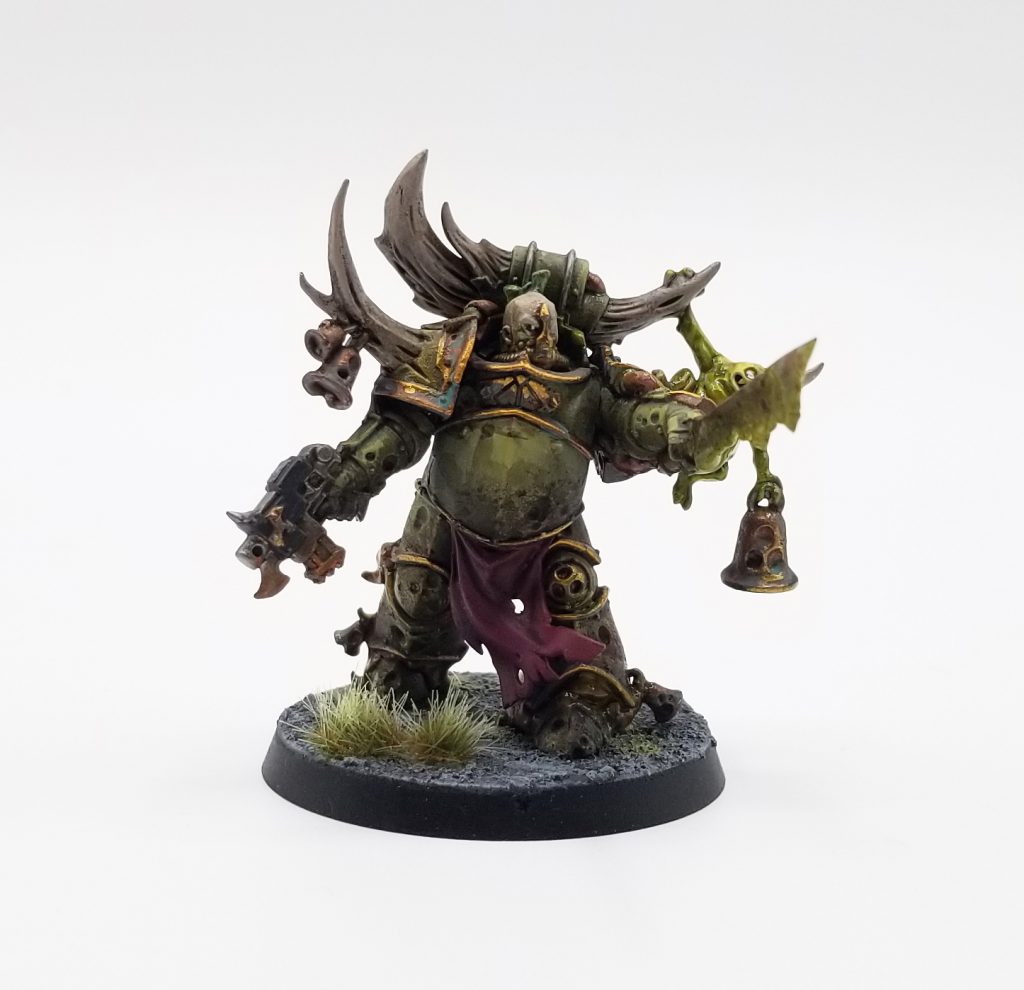
Have any questions or feedback? Drop us a note in the comments or email us at contact@goonhammer.com.

